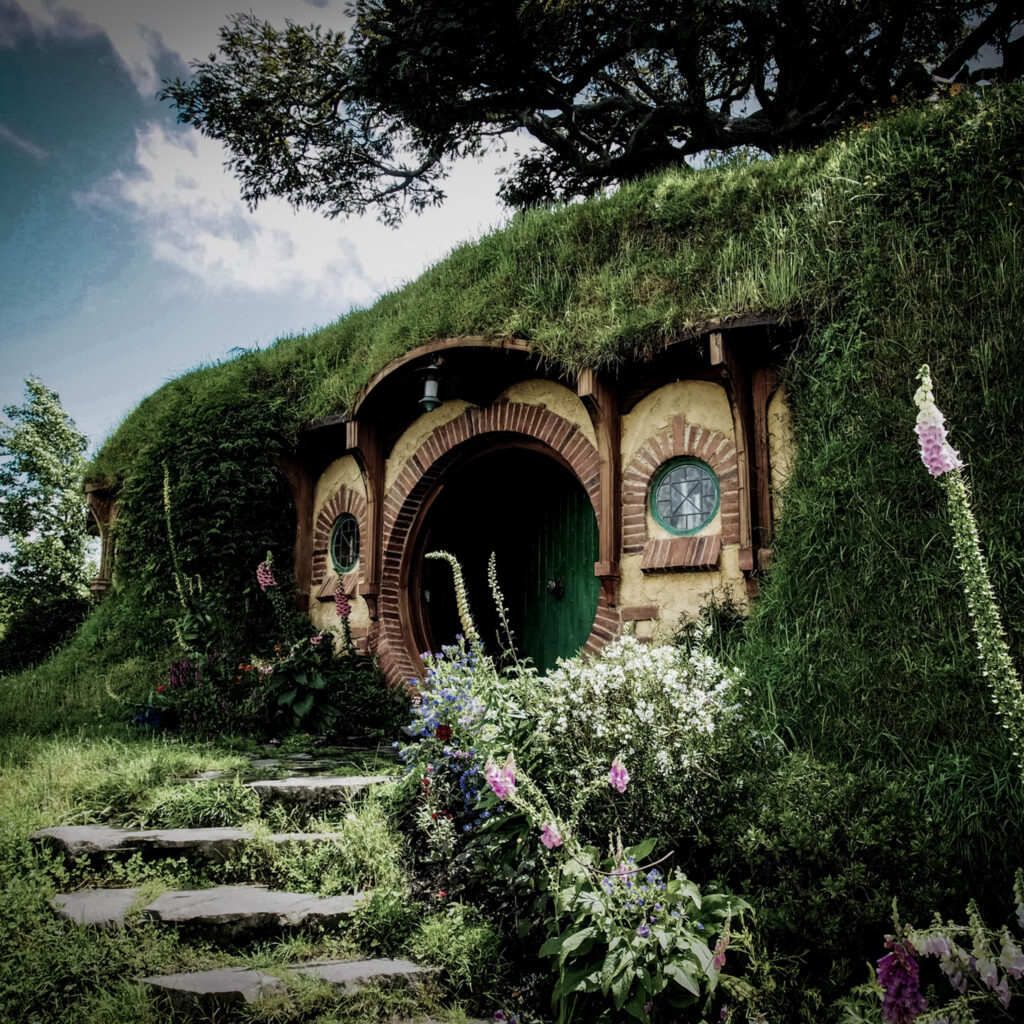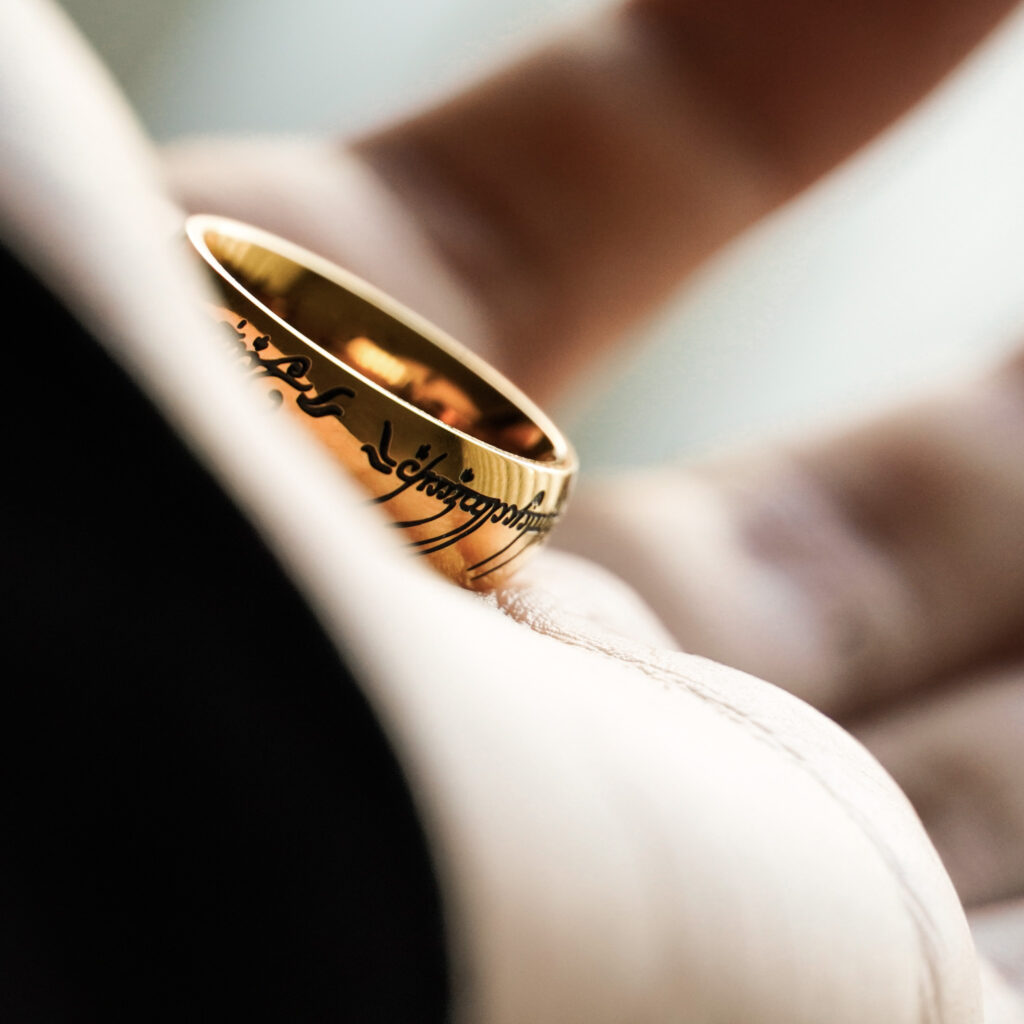What do I mean?
If you’re fairly familiar with Tolkien’s writings (not just his books, but his writings about his books), you may be somewhat confused by the title of this post. Calling The Lord of the Rings an allegory can be pretty controversial given that Tolkien himself stated that it was not an allegory.
As for any inner meaning or ‘message’, it has in the intentions of the author none. It is neither allegorical nor topical.
J.R.R. Tolkien, Foreword to The Fellowship of the Ring
This quote has always confused me a little bit, because from the moment I first read The Lord of the Rings as a young teenager, I could see all sorts of allegories in the story. Aragorn as a picture of Jesus the King, Frodo as a picture of Jesus laying down his life for the world, Gandalf as a picture of Christ resurrected. But then Frodo is also a picture of suffering humanity, since our lives can often be likened to Frodo’s weary journey towards Mordor. And in the end, setting sail from the Grey Havens for Valinor is a picture of the end of our lives as we approach heaven.
Basically, I didn’t understand why Tolkien himself would claim that his story was not an allegory, when it was so obvious that there were such strong allegorical elements in his stories.

Definitions are everything!
The answer lies in the fact that the word allegory is not strictly applicable to Tolkien’s stories.
al·le·go·ry| ˈaləˌɡôrē |
noun (plural allegories) a story, poem, or picture that can be interpreted to reveal a hidden meaning, typically a moral or political one: Pilgrim’s Progress is an allegory of the spiritual journey.
• a symbol.
Working with that definition, it is fairly easy to realize that no, The Lord of the Rings is not an allegory in the sense that, say for example, Pilgrim’s Progress is. In Pilgrim’s Progress, there are one-to-one metaphors, i.e. Christian is a picture of, well, you guessed it, Christians! Giant Despair is a picture of our struggles with despair, Faithful is a picture of a faithful believer, etc. etc.
So in that way, The Lord of the Rings is very much not an allegory. If both Aragorn and Gandalf are pictures of Christ, it can’t be an allegory in the strict sense of the word.
top·i·cal| ˈtäpək(ə)l |
adjective
(of a subject) of immediate relevance, interest, or importance owing to its relation to current events: a wide variety of subjects of topical interest.
So if The Lord of the Rings is not an allegory, is it topical?
Well, Tolkien himself states that it is not and I would tend to agree. While there are aspects of the series that seem to relate to certain times or situations during history, it is not a one-for-one in that case either. While a lot of people can see a lot of similarities between events in the books and the time period during which they were written (WWII era), Tolkien firmly denied that it was metaphorical of real world events.
“The real war does not resemble the legendary war in its process or its conclusion. If it had inspired or directed the development of the legend, then certainly the Ring would have been seized and used against Sauron; he would not have been annihilated but enslaved, and Barad-Dûr would not have been destroyed but occupied. Saruman, failing to get possession of the Ring, would in the confusion and treacheries of the time have found in Mordor the missing links in his own researches into Ring-lore, and before long he would have made a Great Ring of his own with which to challenge the self-styled Ruler of Middle-earth. In that conflict both sides would have held hobbits in hatred and contempt: they would not long have survived even as slaves.”
J.R.R. Tolkien, Foreword to the Second Edition

Faith & The Lord of the Rings
In addition, allegories are usually written with the intention of including a hidden meaning or moral, and topical stories are usually written with an obvious meaning, but Tolkien himself states that that was not originally the case. So if The Lord of the Rings is neither allegorical nor topical, then what is it?
Well, it’s many things.
“The Lord of the Rings’ is of course a fundamentally religious and Catholic work; unconsciously so at first, but consciously in the revision. That is why I have not put in, or have cut out practically all references to anything like ‘religion,’ to cults or practices, in the imaginary world. For the religious element is absorbed into the story and symbolism.”
J.R.R. Tolkien, The Letters of J.R.R. Tolkien
One of the major elements of The Lord of the Rings that stood out to me the most when I read it the first time, and which still stands out to me with each subsequent reread is that Tolkien’s Christian faith very clearly influenced his writings. Beyond just the common literary trope of a “chosen one” and an “exiled king,” Tolkien’s works are iconic for bringing in so many different elements of the Christian faith and yet at the same time not even referencing God a single time in the story.
For example, to contrast his writings with those of his best friend and colleague, C.S. Lewis, while Lewis’ works were openly Christian in the way that they were obvious allegories of the Gospel story, Tolkien’s references to Christianity were more subtle.
As I mentioned previously, multiple characters in The Lord of the Rings serve as pictures of Christ. To start at the beginning, Frodo is a picture of Christ in the way that he selflessly takes on the burden of the entirety of Middle Earth (the One Ring) and willingly embarks on a journey that he knows will very likely be his last. He does this because he knows that he must, and that if he doesn’t there is no other way to save Middle Earth.
The next character who is a picture of Christ is Gandalf. Gandalf is a metaphor of Christ in the way that he goes to his death fighting the demonic Balrog, descending into the fiery abyss of Moria only to rise again from that death and bring hope to Middle Earth in some of its darkest moments.
The third character who personifies Christ is Aragorn. The metaphor here is obvious. Aragorn is the long forgotten king who returns to claim his kingdom and rescue his people from oppression and despair. In addition, Aragorn is also a picture of Christ as the “second Adam” who comes to right the wrongs of his predecessors.
Indeed, all of these characters personify Christ in different ways, and yet none of them are a perfect one-for-one allegory.

To further demonstrate that point, Frodo is also a very poignant personification of suffering humanity (and specifically, my personal opinion is that his character is very relatable for anyone who struggles with their mental health, but that’s a topic for another post). The entire journey to Mordor, Frodo is bearing an enormous weight (the Ring), and it pushes him almost to his breaking point. Only once he is rid of the Ring does he experience any relief, and only once he leaves Middle Earth for Valinor is he truly able to rest. In the real world, because Adam’s fall introduced sin into the world, humanity is destined to suffer, and only Christ’s saving work on the cross which opened the way for us to spend eternity in Heaven will ever bring us true rest. Tolkien portrays this truth well (albeit subtly) in the character of Frodo.
To sum it all up, while The Lord of the Rings is neither allegorical nor topical, the timeless relatability of this story is not something to be taken lightly. If you haven’t already, I highly encourage you to read the entire trilogy. There is just so much truth and beauty and depth within its pages and in a world where the shallow and the trivial are glamorized, we need more stories that inspire true courage and heroism.
To put it simply, Tolkien was a literary genius, the likes of whom the world may never again experience and I think the main reason why his stories are so enduring and timeless is because they were inspired by the eternal truths of his Christian worldview. These truths transcend time and place and culture, and if we let them, they will point us to back to the ultimate source of truth, God.



